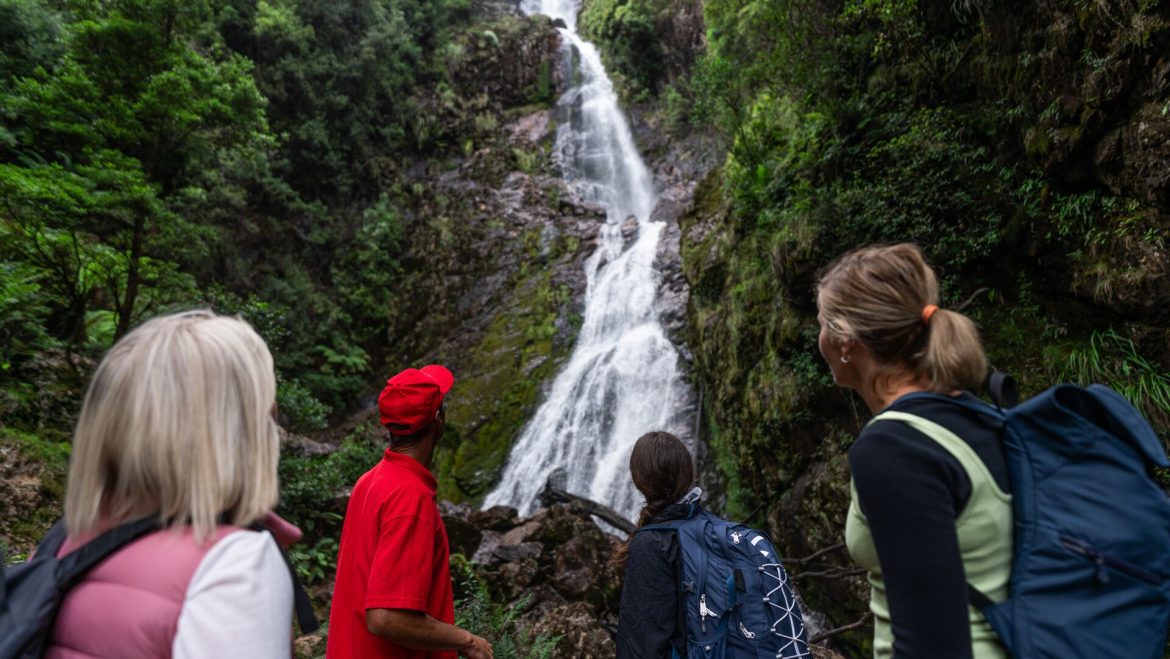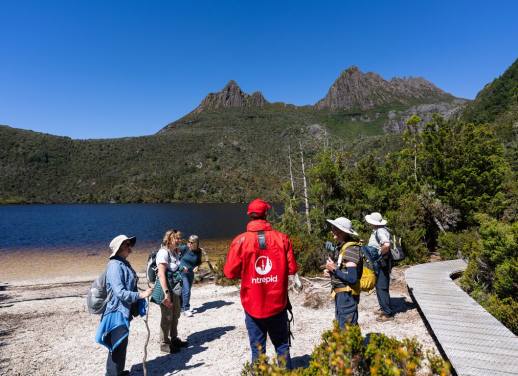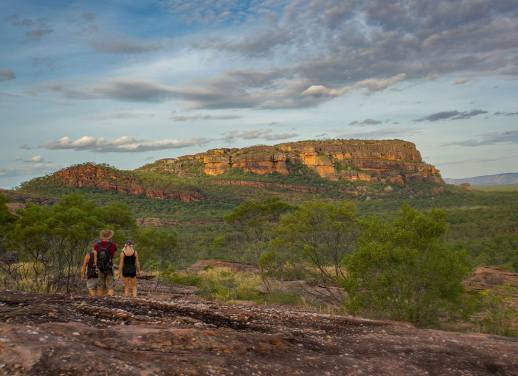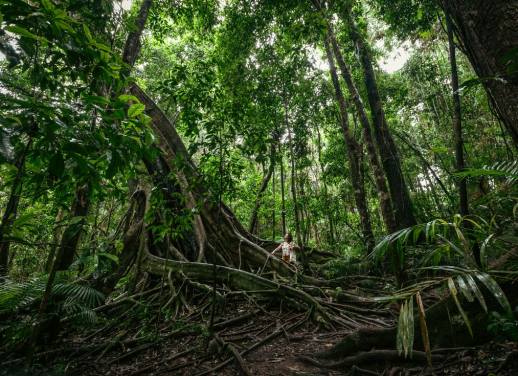Once a stranger to the coasts and wild hinterland of Tasmania, expert author Kirsty Fanton details why she found the southern state’s scenic trails, historic sites and local flavours a must-visit – even for Australians.
It’s hard to pinpoint the exact moment I fell in love with Tasmania. Maybe it was when I sank my teeth into my first meal there, the insanely creamy goat’s cheese and golden yolky goodness of baked eggs from a cafe in the culture-rich riverside city of Launceston, doing happy things to my taste buds.
Or maybe it happened as I picked my way along the white sands and fiery red boulders of Swimcart Beach, not another soul in sight. It could have even been at Delamere’s Vineyard, glass of vintage bubbles in hand and the slow, old winery dog curled warmly at my feet.
But when it happened is beside the point, really: the important thing is that I did fall head over heels for Tasmania, despite the fact I’d expected so little of it. In fact, along with the majority of Australians, I’d written off our southernmost state as small and unexciting; a strange little outcrop at the end of the world, most famous for its ability to grow apples and the now-extinct thylacine (Tasmania tiger or wolf).
What a fool I was, because Tassie should be on every traveller’s radar.
Sitting 240 kilometres south of the mainland, Tasmania has a distinct otherworldly feel to it. This is most obvious in its landscapes, including everything from white sandy beaches to snow-capped mountains and wild, rugged coastal cliffs. Aspiring (but perhaps skilfully challenged) photographers will be happy to know these landscapes are so photogenic it’s almost impossible to take a bad picture.
The best destinations to soak in this astonishing natural beauty are Cradle Mountain in the state’s west, and Bay of Fires, Freycinet National Park, the Tasman Peninsula and Mount Wellington in the east. If this seems like an impossibly long list to work your way through, remember that Tasmania is in fact quite small (the only correct observation I’d held about it pre-visit) and an easy two-hour drive is all you need to get between most places.
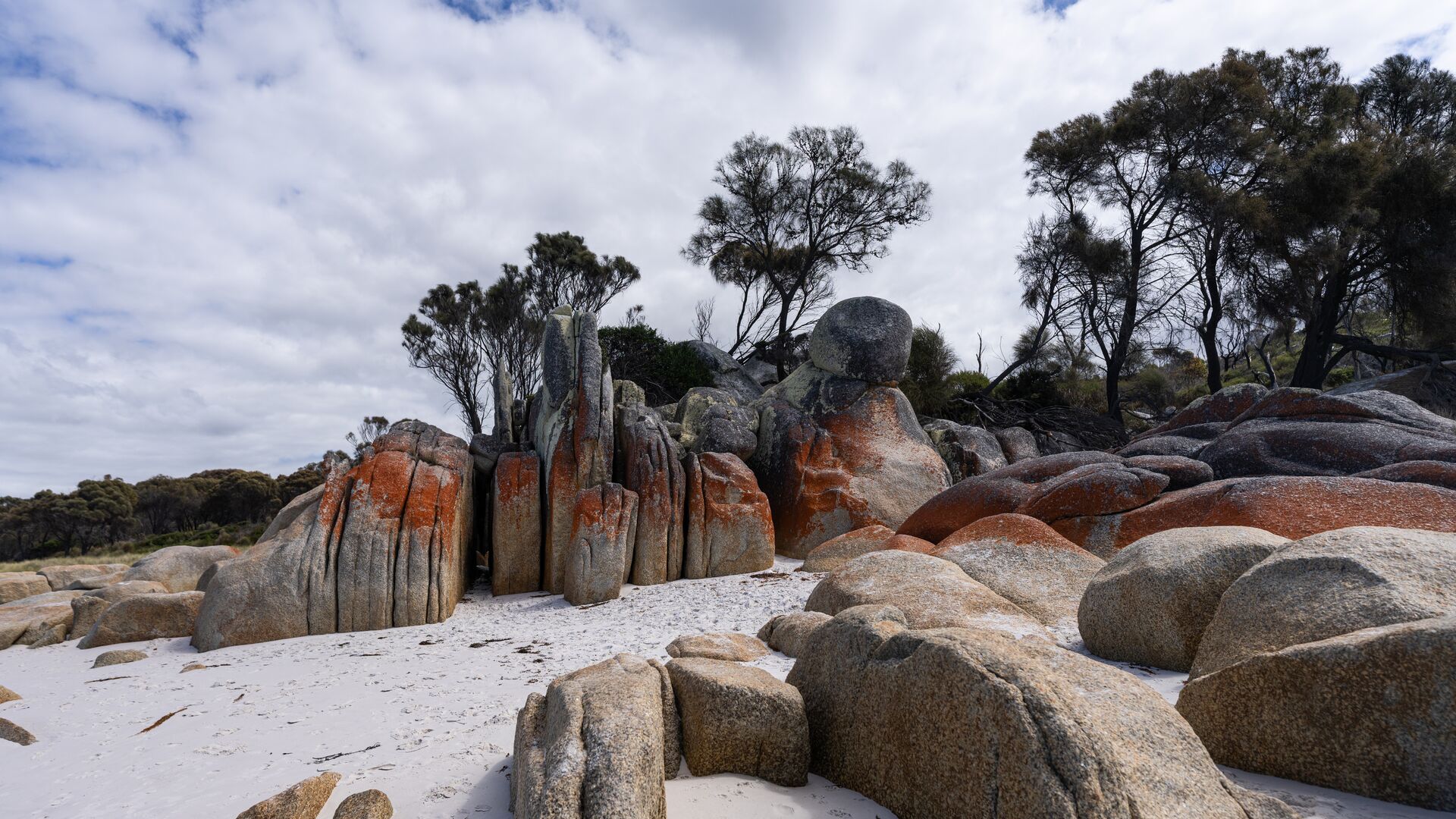
If you have the opportunity to tackle the famous 65 kilometre Overland Track (a multi-day bushwalk through Cradle Mountain-Lake St Clair National Park) along the steep ridges and past the tumbling waterfalls of Cradle Mountain, please do. If not, the two-hour Dove Lake Circuit at the base of the mountain is almost as spectacular and will take you straight past the lake’s boatshed, one of Tassie’s most frequently photographed landmarks.
Over on the east coast, a trip to Freycinet National Park will put you smack bang in the middle of another of the state’s iconic landmarks: Wineglass Bay. Turquoise waters border the perfect crescent of white sand on one side and dense bushland rings on the other. It’s splendidly secluded, thanks to the fact it’s only accessible via a two-hour hike. Chances are you’ll get this place all to yourself – at least for part of your visit – unless you count the local potoroos (small marsupials) as company.
Read more: 7 top day walks in Freycinet National Park
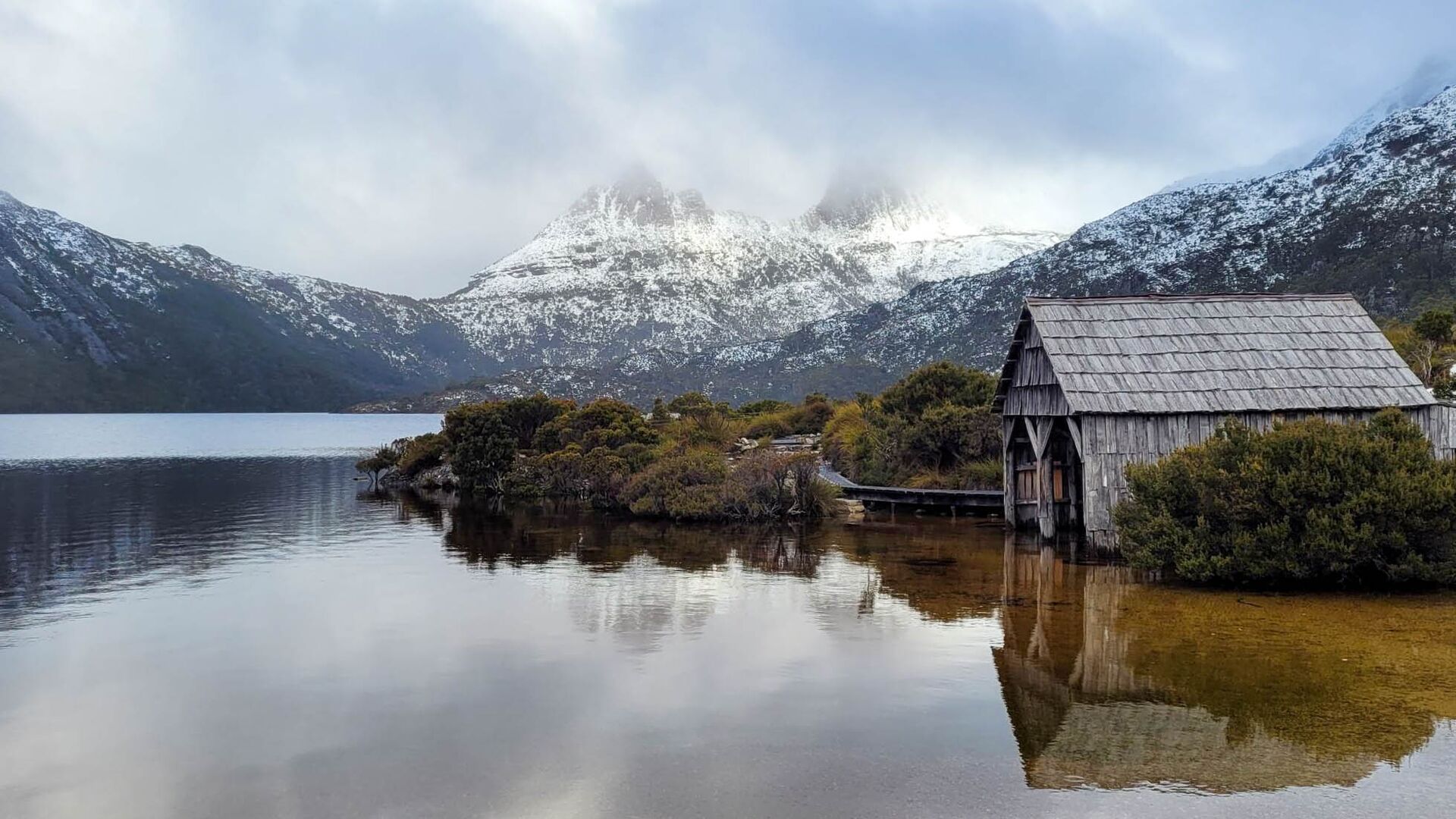
The locals at nearby Bay of Fires claim their beaches are more impressive than Wineglass Bay, despite the fact they’re lesser known: I agree. There’s something so appealing about the vivid colours along here – the crystal-blue waters, almost blindingly white sand and trademark red boulders. The abundance of marine life also sweetens the deal, with hundreds of fish easily found along the shoreline.
Further south, right near Port Arthur (which is also well worth a visit, both for its eerie beauty and fascinating convict history), you’ll stumble upon the Tasman Peninsula. It’s wild and rugged, with millions of years of high winds and ferocious seas forming all manner of geological wonders from a fully functioning blowhole (another one of which can be found in the charming seaside town of Bicheno) to Tasman’s Arch, Devil’s Kitchen and the world’s best example of tessellated pavement.
Read more: Why this Aussie local found Tasmania the perfect close-to-home trip
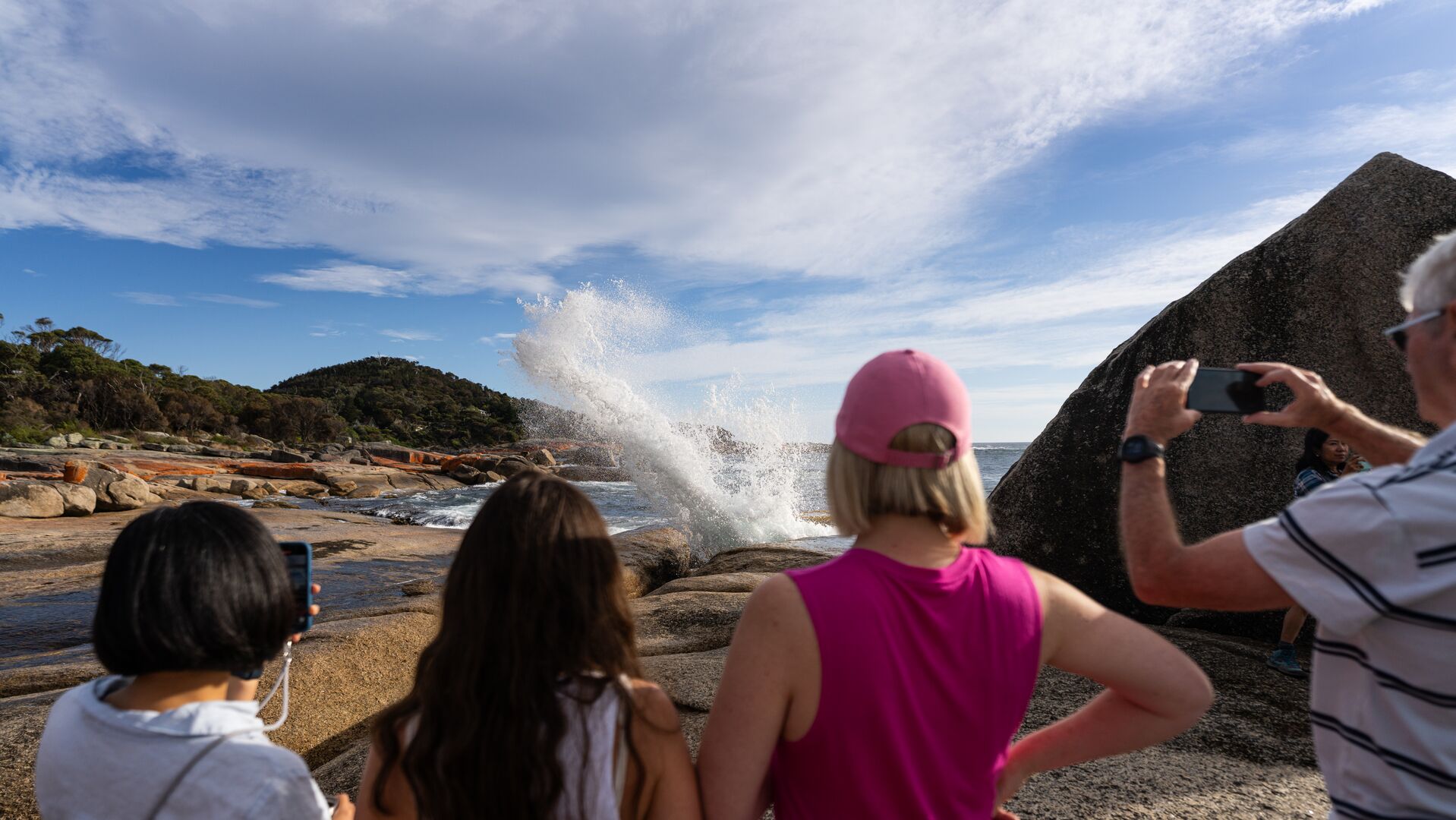
Mount Wellington is the final item on Tassie’s list of ridiculously beautiful landscapes, towering 1271 metres above the city of Hobart. There are stacks of hikes you can do up and around the mountain or – if you’re feeling lazy – a nice road you can take to the top.
If you’re in the mood for a challenge, maybe you should consider the Point to Pinnacle, billed as ‘the world’s toughest half marathon’, that makes its way up the mountain every November. Your lungs may burst and your legs may give out but, holy dooley, those views will be spectacular.
With so much hiking on the cards, you’ll be pleased to know Tasmania is home to some of Australia’s best food. Don’t believe me? Try the local lamb, a Bruny Island Oyster, any of Hobart’s many fine-dining dishes or a spiced quince and walnut tart at a local bakery, and then get back to me.
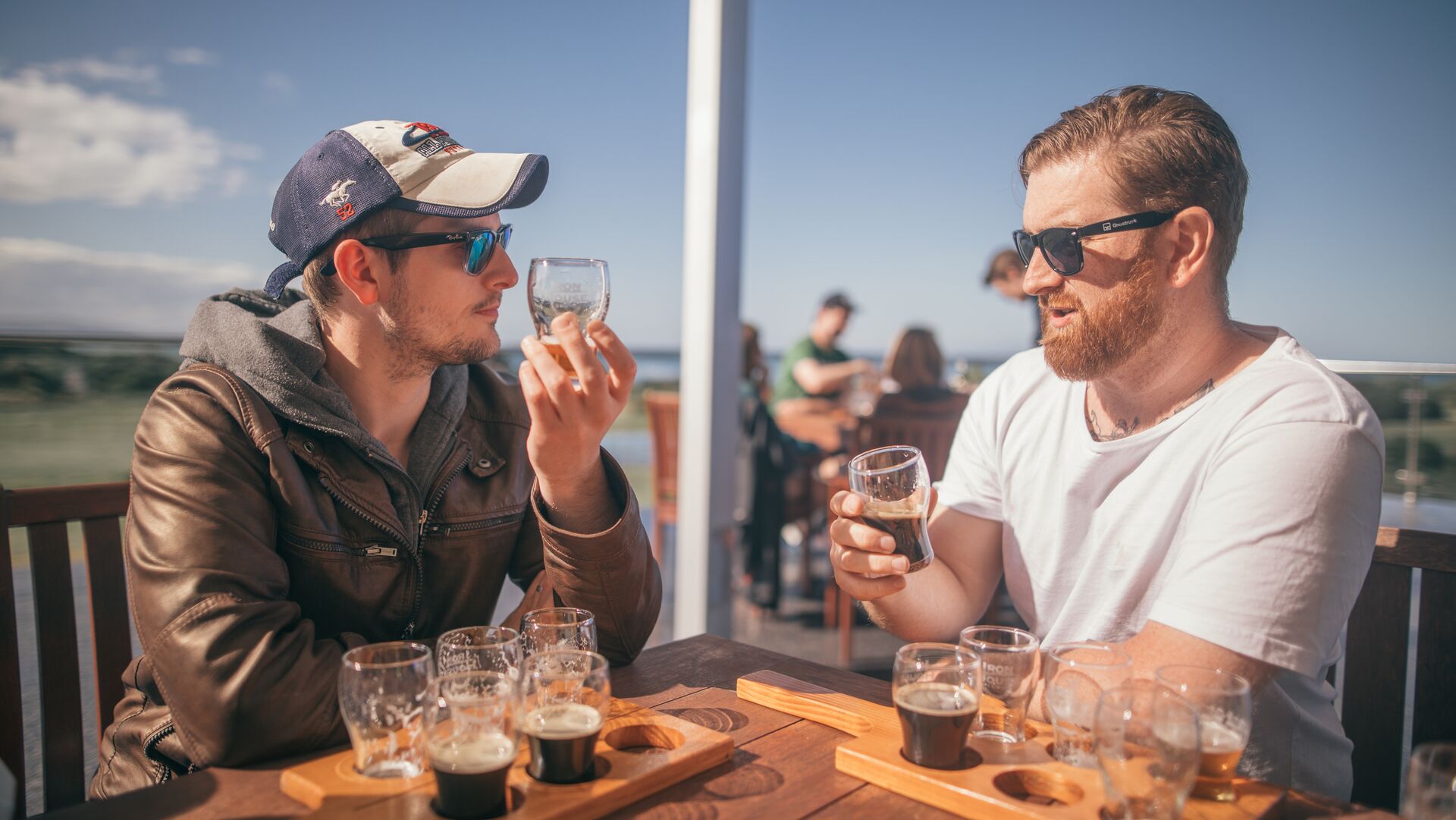
Tassie’s drinks scene is similarly excellent, with vineyards like Delamere Vineyard and Spring Vale producing top-tier sips. On the whisky front, Lark Distillery is doing magical things with fermented rye and Bruny Island House of Whisky knows how to pull off an exceptional tasting. As a bonus recommendation, try a bottle of Willie Smith’s Organic Cider wherever you stumble across it. Its makers have managed to strike the perfect balance between sweet, bitter and bubbly.
I could go on and on about Tasmania and all its glory but, for now, I rest my case. Maybe it’s time you booked a trip and started your own love affair.
Tempted? Explore Tasmania on a small-group adventure with Intrepid.

